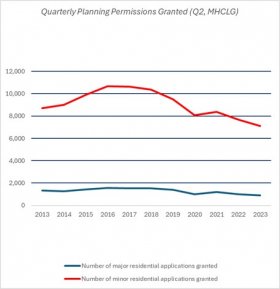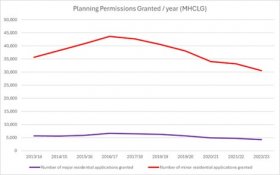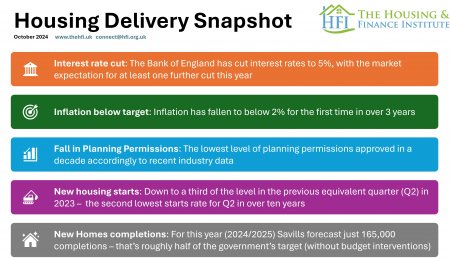

01 AUG 2024
Are Planning Changes enough to hit 1.5 million new homes target?
During the first sitting of Parliament following the election, the new Government hit the ground running in taking steps to meet its target to deliver 1.5 million homes this Parliament.
This is a very demanding target. Housebuilding on this level has not been achieved in the last 50 years – since mankind first landed on the moon.
As Parliament rose for recess, the Housing Secretary, Angela Rayner, announced changes to the National Planning Policy Framework - reinstating the requirement for local councils to meet compulsory housing targets, and hugely upping those compulsory targets for some areas too.

A forward indicator of housing supply is the number of Planning Permissions in the system. The latest dataset for Planning Permissions being applied for and granted was released by the housing department (MHCLG) in June. The numbers show a fall in the grant of residential Planning Permissions for both large and small residential developments.But Planning Permissions had been falling long before the NPPF changes were brought in by Michael Gove.
In fact, Planning Permissions have been falling since 2017. From nearly 45,000 Permissions a year, the numbers of minor residential Planning Permissions have fallen to around 30,000. This represents a fall of over 30%. Major Planning Permissions have seen a similar fall.
The fall since 2017 indicates that more significant planning reform will be needed if the number of Planning Permissions is to rise to the levels required to meet the Government's target of 1.5 million new homes this Parliament.

May 2025 Housing Delivery Snapshot

March 2025 Housing Delivery Snapshot

January 2025 Housing Delivery Snapshot

December 2024


